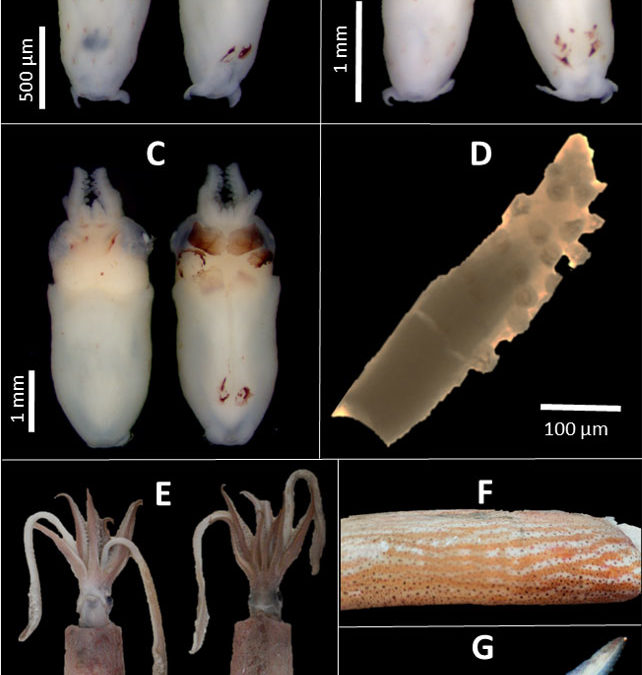Authors: Paulina V. Guarneros-Narváez, Rossanna Rodríguez-Canul, Roxana De Silva-Dávila, Jesús Alejandro Zamora-Briseño, Monica Améndola-Pimenta, Alejandro José Souza, Uriel Ordoñez and Iván Velázquez-Abunader
doi: 10.3389/fmars.2022.941908
Abstract:
Global commercial catches of squid have increased greatly in the last few years. However, approximately a quarter of the squid catches are still unidentified. In the southeastern Gulf of Mexico (SGoM), the squid catches are not recorded most of the time and are unidentified. This lack of knowledge limits the evaluation of the populations and prevents the establishment of conservation strategies. In this study, we used morphological and molecular (DNA barcoding– cytochrome c oxidase subunit I gene) identification tools to analyze the species composition of the family Loliginidae based on their paralarvae (PL), their abundance distribution by size class, and their genetic structure on the Yucatan Shelf, SGoM. A total of 134 PL were also collected from three oceanographic cruises held in 2015, 2016, and 2018. A total of 56 adults were collected from three ports of Yucatan. Both adults and PL were identified as Doryteuthis pleii (Blainville, 1823). The highest abundances of PL were detected from the West and the Central zones of the Yucatan Shelf at 50- and 15-m depth isobaths at 163 and 21 km from the coastline, respectively. The abundance was higher (316 PL•1,000 m-3) in the early summer (June 2018), medium (213 PL•1,000 m-3) at the end of summer and early autumn, and very low (24 PL•1,000 m-3) in late autumn. A high haplotype and nucleotide diversity (Hd= 0.77; p= 0.002) with no structured population (Fst < 0) was also found, suggesting a continuous gene flow throughout the Yucatan Shelf. This information establishes the basis for a future comprehensive understanding of their biological cycle and population dynamics.
Keywords: squids, Doryteuthis pleii, hatchlings, DNA barcoding, Yucatan Shelf


Comentarios recientes